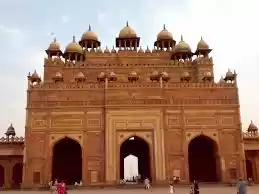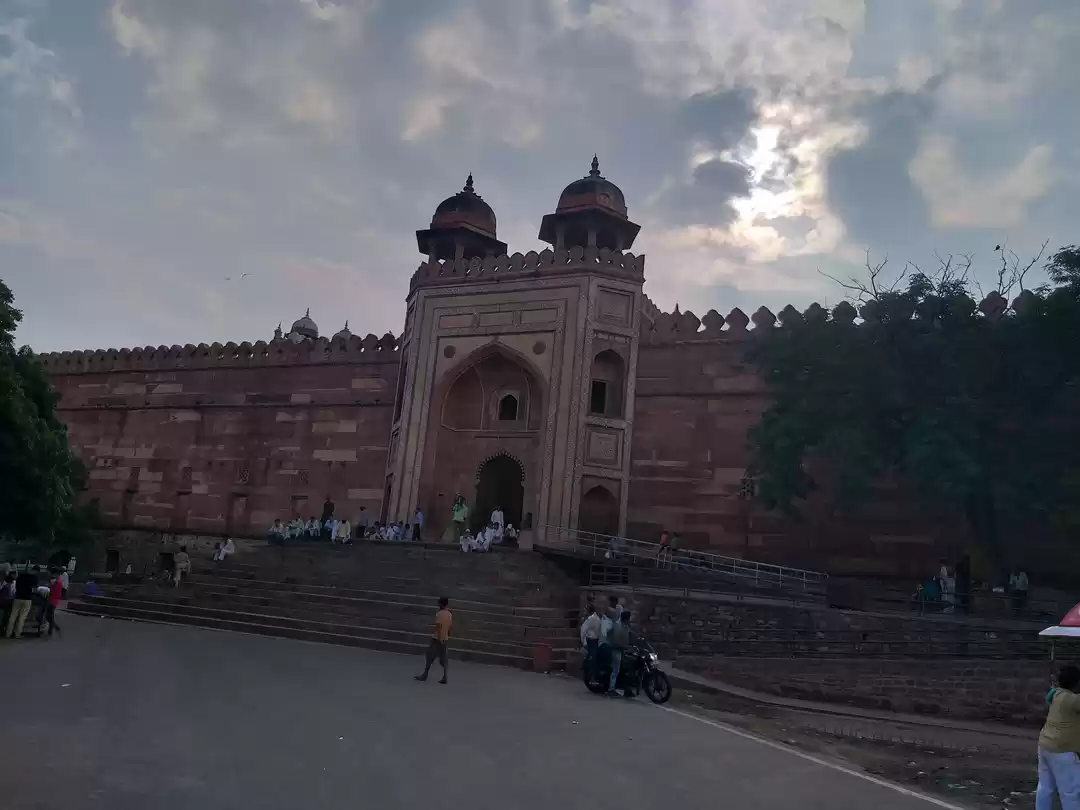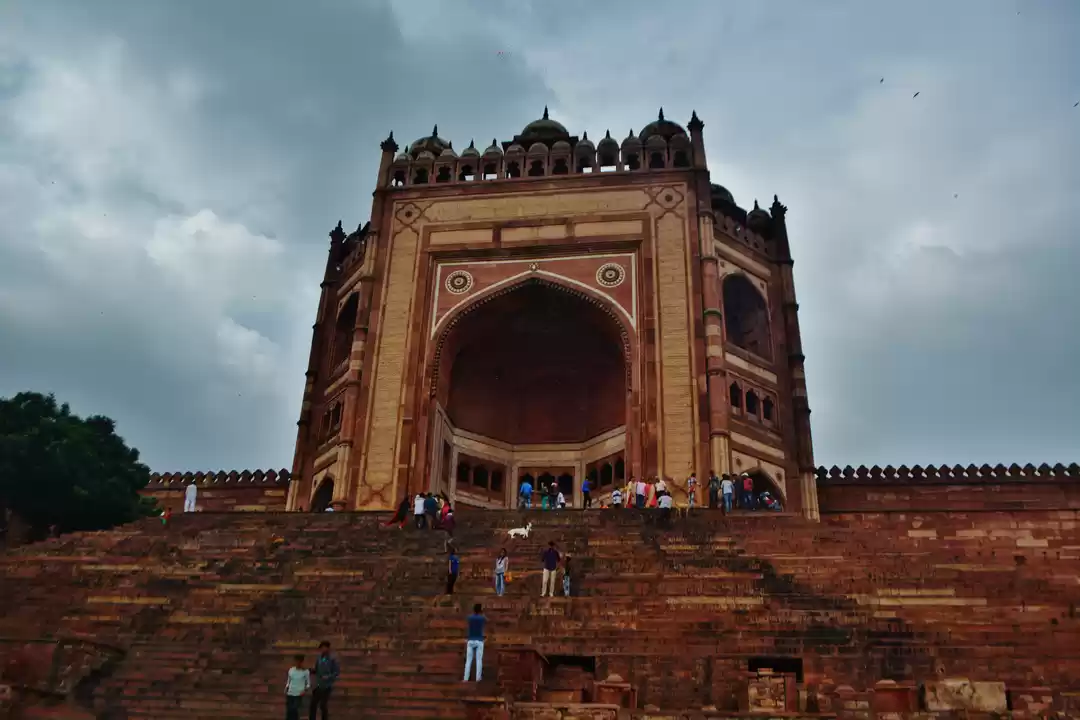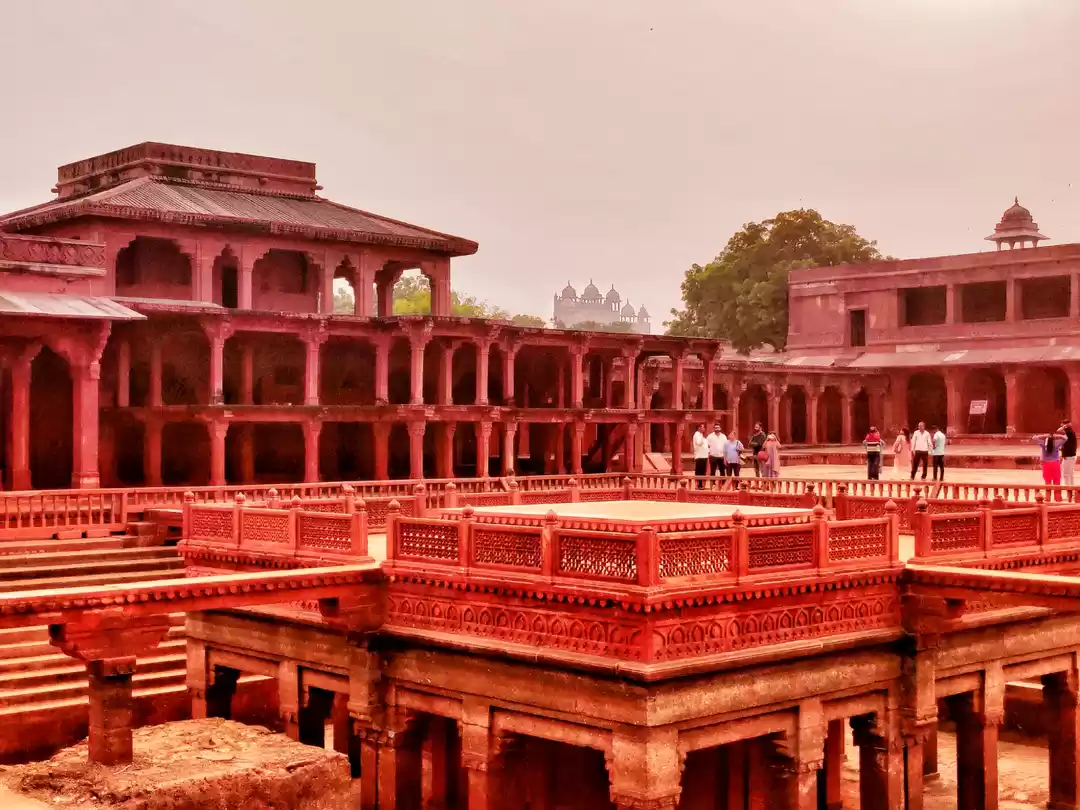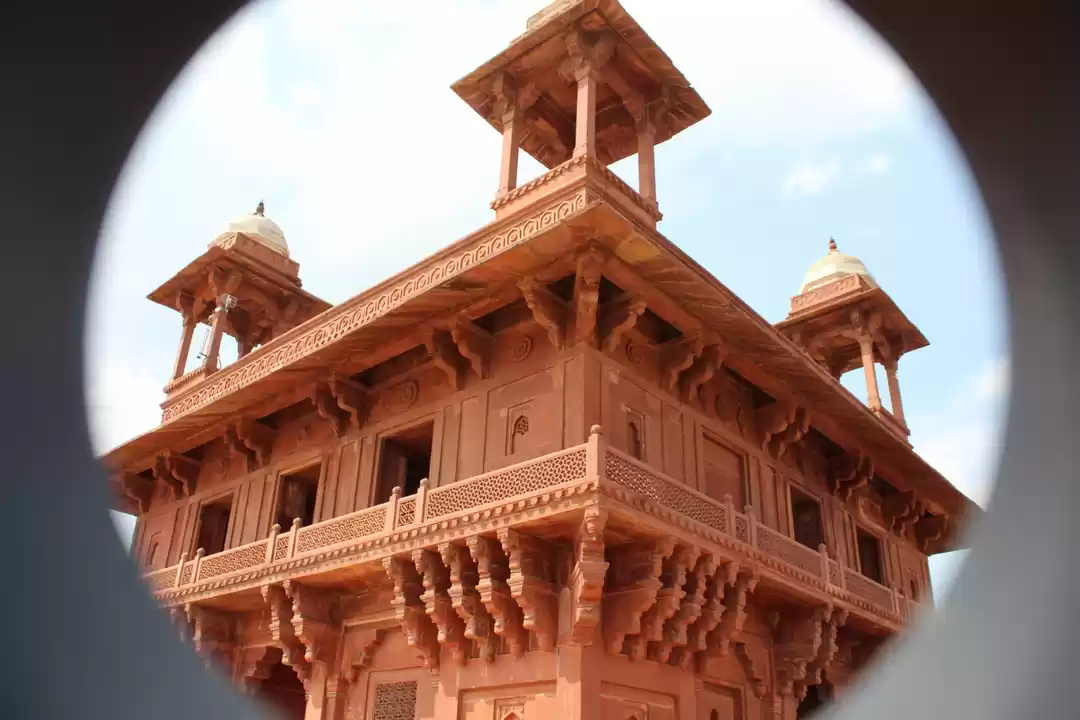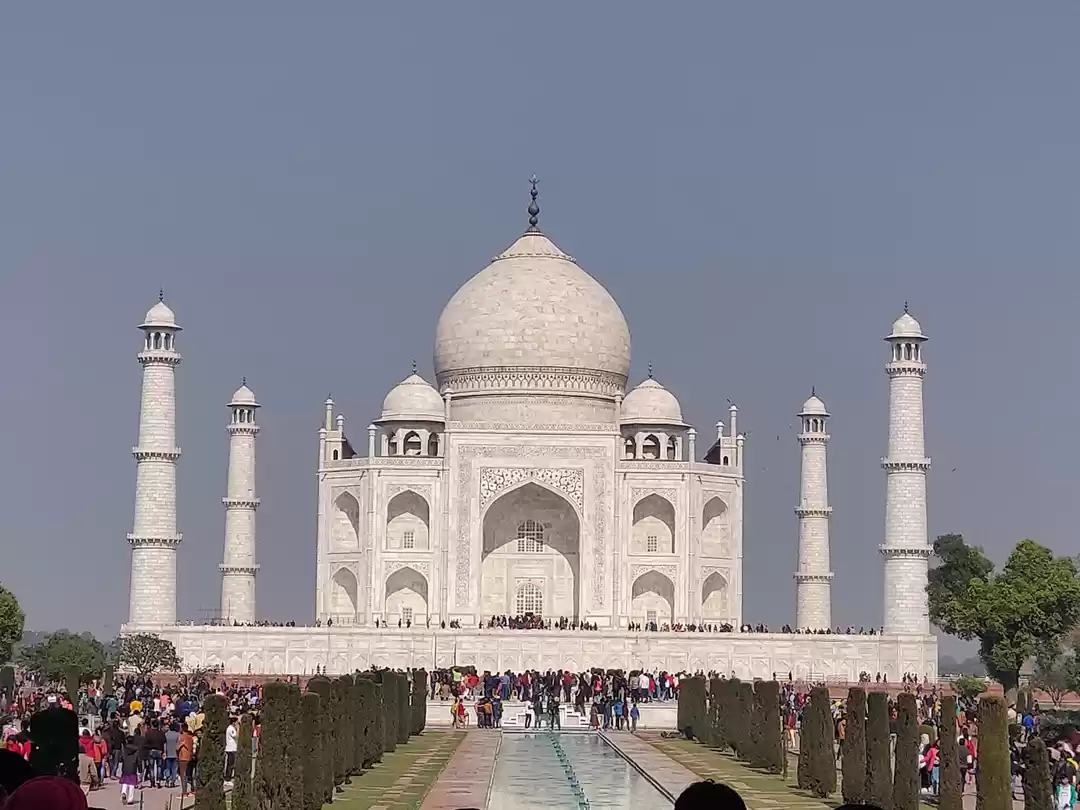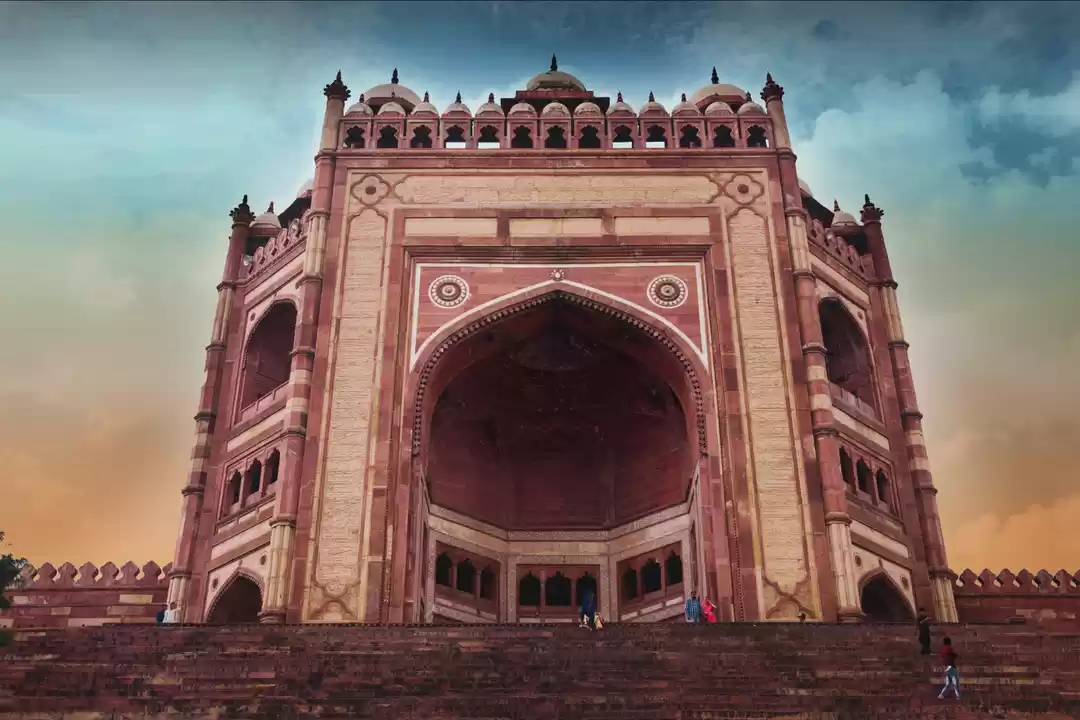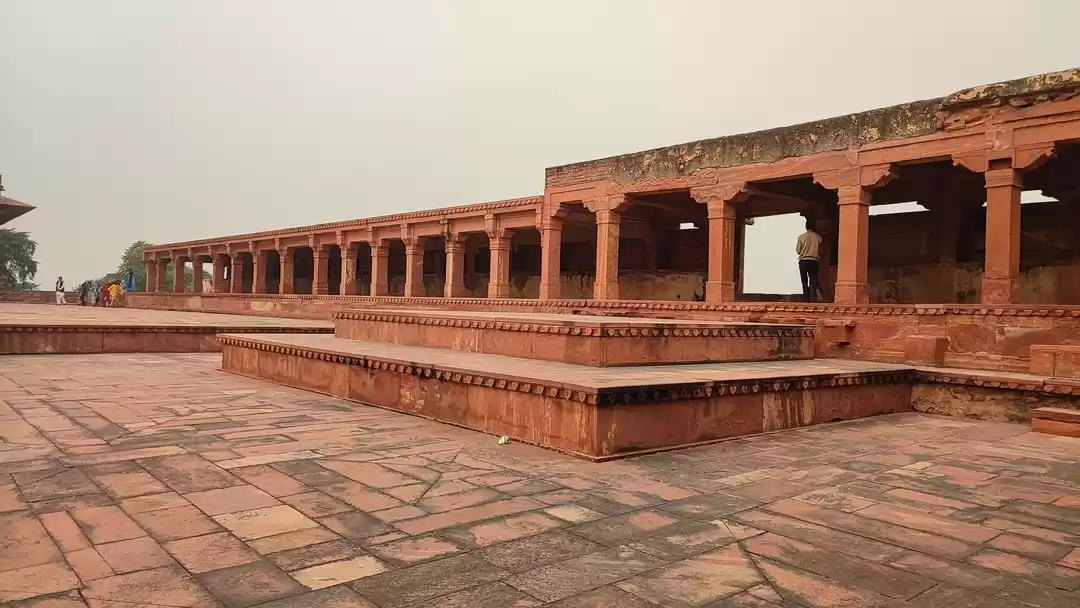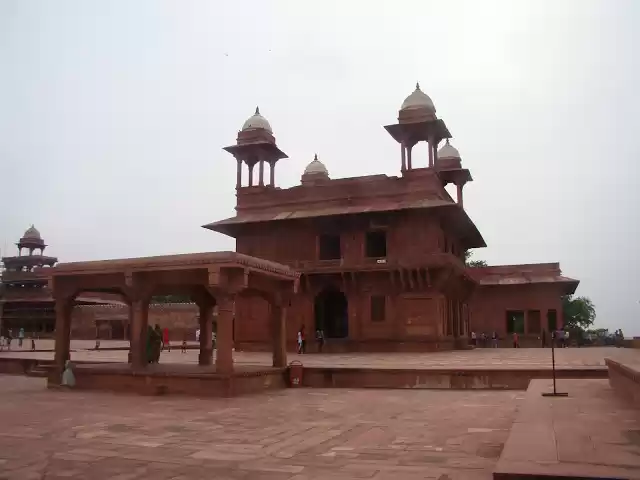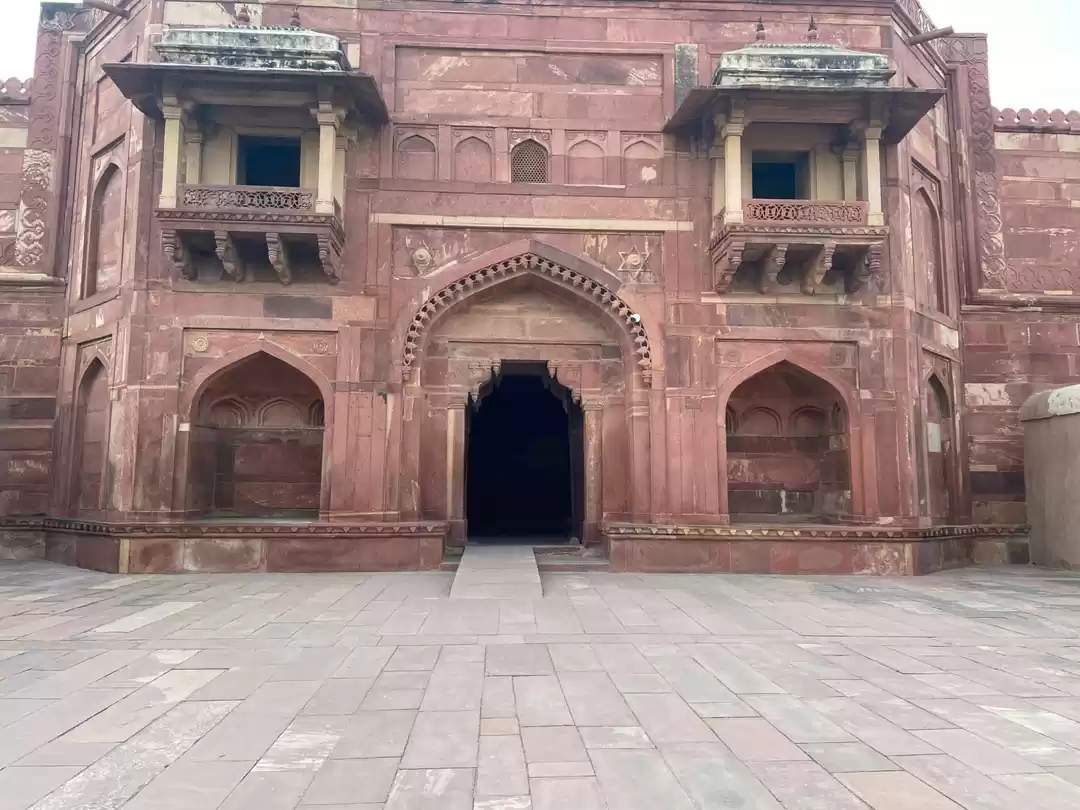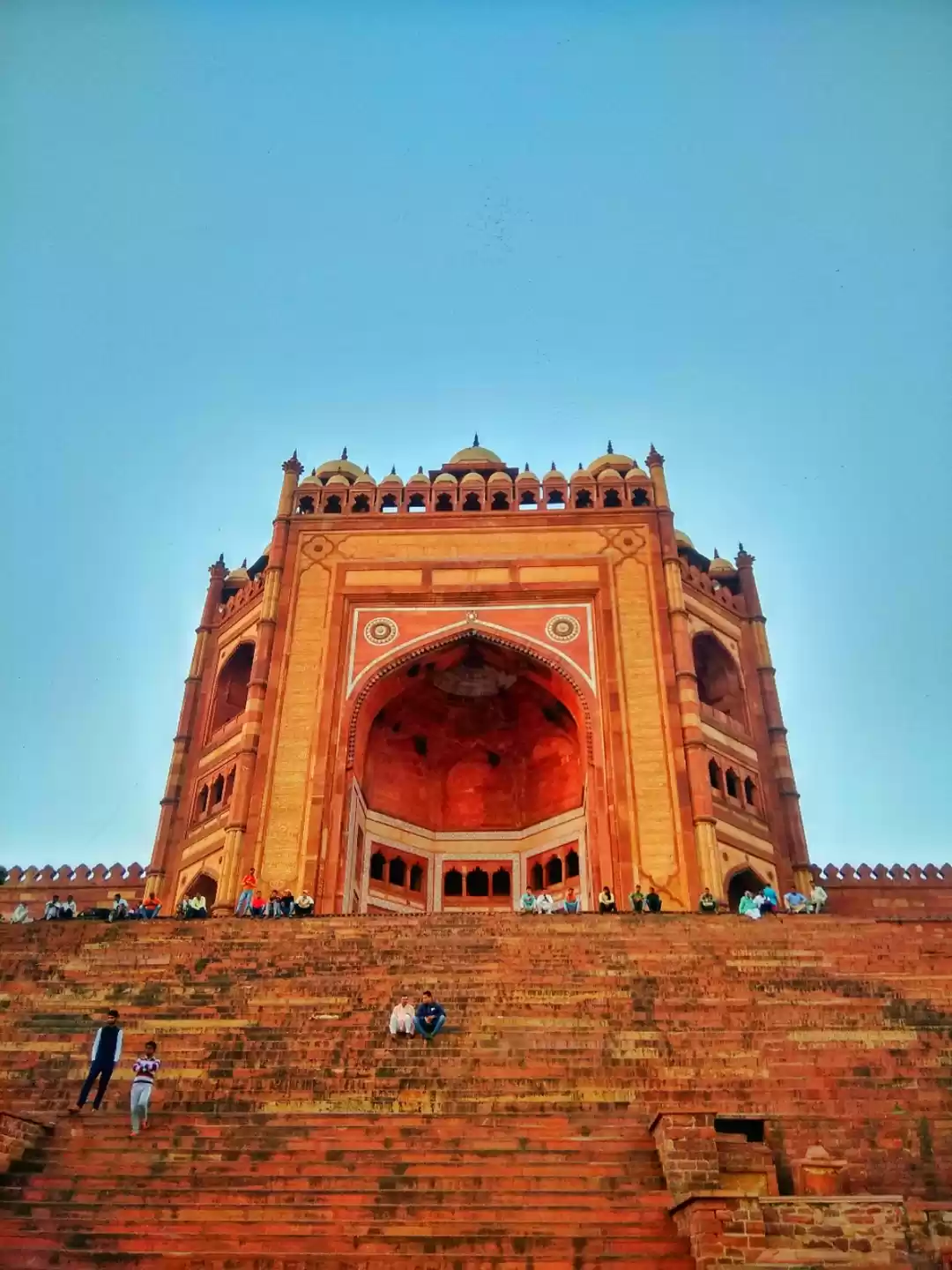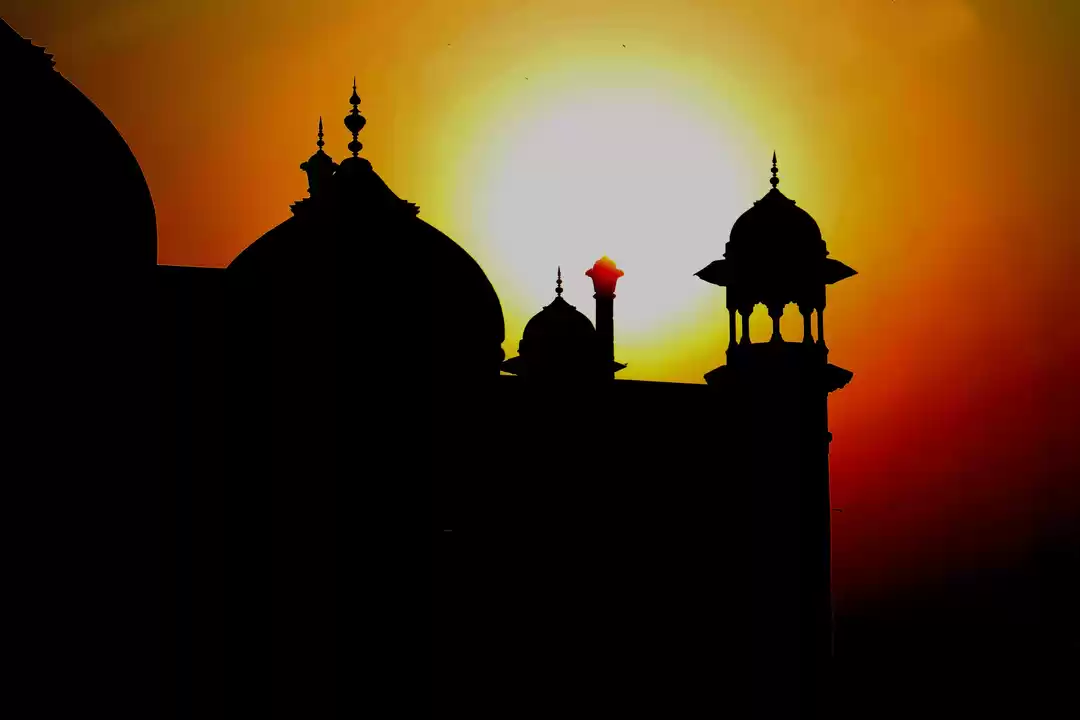Have you ever wondered how the Mughals entertained themselves in their lavish palaces? If yes, then you must visit Panch Mahal, a magnificent and unique monument in the former capital of the Mughal Empire, Fatehpur Sikri. Panch Mahal, which means “five palaces” in Hindi, is a five-storey palace built by Akbar, the greatest Mughal ruler, for his relaxation and amusement. It is one of the most remarkable and elegant structures in India, reflecting the fusion of Persian, Hindu, Jain, and Buddhist influences. In this article, we will inform and educate you about the history, architecture, and attractions of Panch Mahal, and help you plan a visit to this splendid and fascinating place.
History of Panch Mahal
Panch Mahal was constructed between 1571 and 1585, as part of Akbar’s grand project to build a new capital city in Fatehpur Sikri, a UNESCO World Heritage Site. Fatehpur Sikri was a gorgeous fortified citadel, where Akbar established his court and administration. It was also a center of culture and religion, where Akbar promoted his policy of religious tolerance and syncretism. Fatehpur Sikri witnessed some of the most glorious and prosperous years of the Mughal Empire, until it was abandoned in 1585 due to water scarcity and political instability.

Panch Mahal was used as a recreational and entertainment palace by Akbar and his court, where they enjoyed music, dance, poetry, and games. It was also a place where Akbar met his nine jewels (Navaratnas), the most talented and influential people in his empire, such as the poet and musician Tansen, the philosopher and minister Birbal, and the astrologer and mathematician Faizi.
Panch Mahal was also the residence of Akbar’s favorite wife Jodha Bai, a Rajput princess, who gave birth to his son Jahangir, the successor of the Mughal throne. Jahangir, in turn, was the father of Shah Jahan, the builder of the Taj Mahal.
Architecture of Panch Mahal
Panch Mahal is a stunning example of the Mughal architecture, which combines the elements of Persian, Hindu, Jain, and Buddhist styles. It resembles a Buddhist temple, with five receding levels, supported by 176 columns, and topped by a chhatri (domed pavilion). The lowest level has 84 columns, the second level has 56 columns, the third level has 20 columns, the fourth level has 12 columns, and the fifth level has 4 columns. The columns are made of red sandstone, and are decorated with carvings and motifs. The ceilings of each level are tapering, creating a pyramidal shape. The levels are connected by staircases, and are surrounded by lattice screens (jalis), which allow the breeze and light to enter the palace. The chhatri on the top level is the crowning glory of the palace, and offers a panoramic view of the surroundings. The palace is situated on a raised platform, overlooking the Anoop Talao pool, where musical and cultural performances were held.
Panch Mahal is a unique and elegant structure, that showcases the artistic and aesthetic vision of Akbar and his architects. It is also a symbol of the cultural and religious diversity and harmony of the Mughal era, as it incorporates the features and influences of various traditions and faiths. Panch Mahal is comparable to other similar or related monuments in India, such as Hawa Mahal in Jaipur, which is also a five-storey palace with lattice screens, Diwan-i-Khas in Fatehpur Sikri, which is also a hall of audience with a chhatri, and Qutub Minar in Delhi, which is also a tapering tower with red sandstone pillars.
Attractions and Activities at Panch Mahal
Panch Mahal offers a lot of attractions and activities for the visitors, who can enjoy the beauty and history of the place.
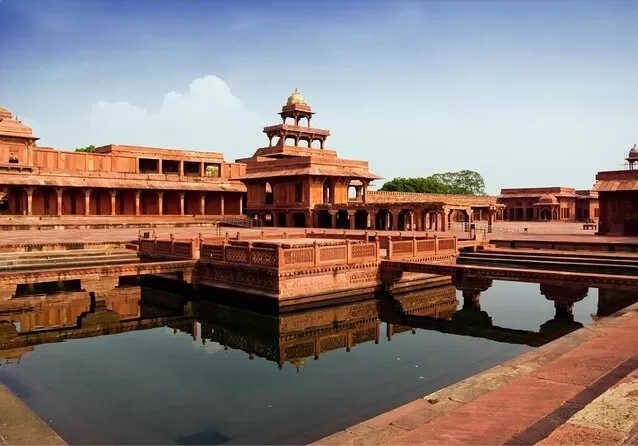
Some of the things that you can do at Panch Mahal are:
Marvelling at the craftsmanship and beauty of the monument, and imagining the royal lifestyle and leisure of the Mughals. You can admire the intricate and exquisite details of the columns, the ceilings, the lattice screens, and the chhatri, and feel the regal aura and charm of the palace.
Exploring the nearby monuments and gardens in Fatehpur Sikri, such as Buland Darwaza, the highest gateway in the world, Jama Masjid, the largest mosque in India, Tomb of Salim Chishti, the revered shrine of the Sufi saint, Pachisi Court, the giant board game of Akbar, Birbal’s House, the residence of Akbar’s witty minister, and Jodha Bai’s Palace, the palace of Akbar’s beloved wife.
Witnessing the sunset and the night view of Panch Mahal, which creates a stunning and romantic atmosphere. You can see the palace glowing in the golden and silver light, and reflecting in the pool. You can also enjoy the sound and light show, which narrates the history and stories of Fatehpur Sikri.
Taking photos and videos of Panch Mahal and Fatehpur Sikri, and sharing them on social media or with friends and family. You can capture the beauty and elegance of the palace, and the scenic and historic views of the city. You can also pose with the palace or the pool, and create some memorable and fun moments.
In our opinion, the best attractions and activities at Panch Mahal are marvelling at the craftsmanship and beauty of the monument, and witnessing the sunset and the night view of the palace. These are the things that will make you appreciate the artistic and architectural excellence of the Mughals, and the splendor and glory of their empire.
How to Visit Panch Mahal
If you are planning to visit Panch Mahal, here are some information and tips that will help you:
The distance and directions from Agra, the nearest major city, and how to reach by car, bus, train, or taxi. Panch Mahal is located in Fatehpur Sikri, which is about 40 km from Agra. You can reach Fatehpur Sikri by car, bus, train, or taxi. The car ride takes about an hour, and the bus ride takes about an hour and a half. The train ride takes about 30 minutes, and the taxi ride takes about 45 minutes. You can also book a guided tour or a package that includes the transportation and the entry fee.
The best time and season to visit Panch Mahal, and how to avoid the crowds and the heat. The best time and season to visit Panch Mahal is between October and March, when the weather is pleasant and cool. The peak season is between November and February, when the place is crowded and busy. The off season is between April and September, when the weather is hot and humid. You can avoid the crowds and the heat by visiting early in the morning or late in the evening, and by carrying water, sunscreen, and hats.
The opening hours and the entry fee of Panch Mahal, and how to buy tickets online or at the gate. Panch Mahal is open from sunrise to sunset, every day of the week. The entry fee is Rs. 50 for Indians, and Rs. 600 for foreigners. You can buy tickets online or at the gate. You can also buy a composite ticket, which includes the entry to all the monuments in Fatehpur Sikri, for Rs. 260 for Indians, and Rs. 750 for foreigners.
The nearby places to stay and eat in Fatehpur Sikri, and the average cost and quality of the accommodation and food. There are not many options for staying and eating in Fatehpur Sikri, as it is a small and remote town. You can find some budget hotels and guest houses, which charge around Rs. 500 to Rs. 1000 per night. You can also find some local restaurants and street food stalls, which serve Indian and Mughlai cuisine, and charge around Rs. 100 to Rs. 300 per meal. You can also stay and eat in Agra, which has more options and variety, and is only an hour away from Fatehpur Sikri.
Some safety and etiquette advice on how to visit Panch Mahal
Wearing comfortable and modest clothing and shoes, as you will have to walk a lot and climb stairs, and as you will be visiting a religious and cultural site.
Respecting the cultural and religious significance of the place, and following the rules and regulations of the authorities. You should not touch or damage the monument or the artifacts, and you should not make noise or disturb the peace.
Being aware of the scams and touts, who may try to sell you fake or overpriced souvenirs, guides, or services. You should bargain or avoid them as much as possible, and you should not trust anyone who claims to be an official or a representative of the place.
Being responsible and eco-friendly, and not littering or polluting the monument or the environment. You should carry your own trash and dispose it properly, and you should not use plastic or non-biodegradable materials.
Panch Mahal is a splendid and fascinating monument that deserves to be visited and appreciated by everyone. It is a masterpiece of the Mughal architecture, and a symbol of the cultural and religious diversity and harmony of the Mughal era. It is also a place where you can experience the history and culture of the Mughal Empire, and enjoy the beauty and charm of the palace and the city.
Are you ready to explore the majestic palace of leisure and entertainment in Fatehpur Sikri? If yes, then book your tickets and pack your bags, and get ready for an unforgettable and amazing trip. Thank you for reading this article, and we hope you found it informative and helpful.
If you have any feedback, comments, or questions, please feel free to share them with us. We would love to hear from you. Happy travelling!

